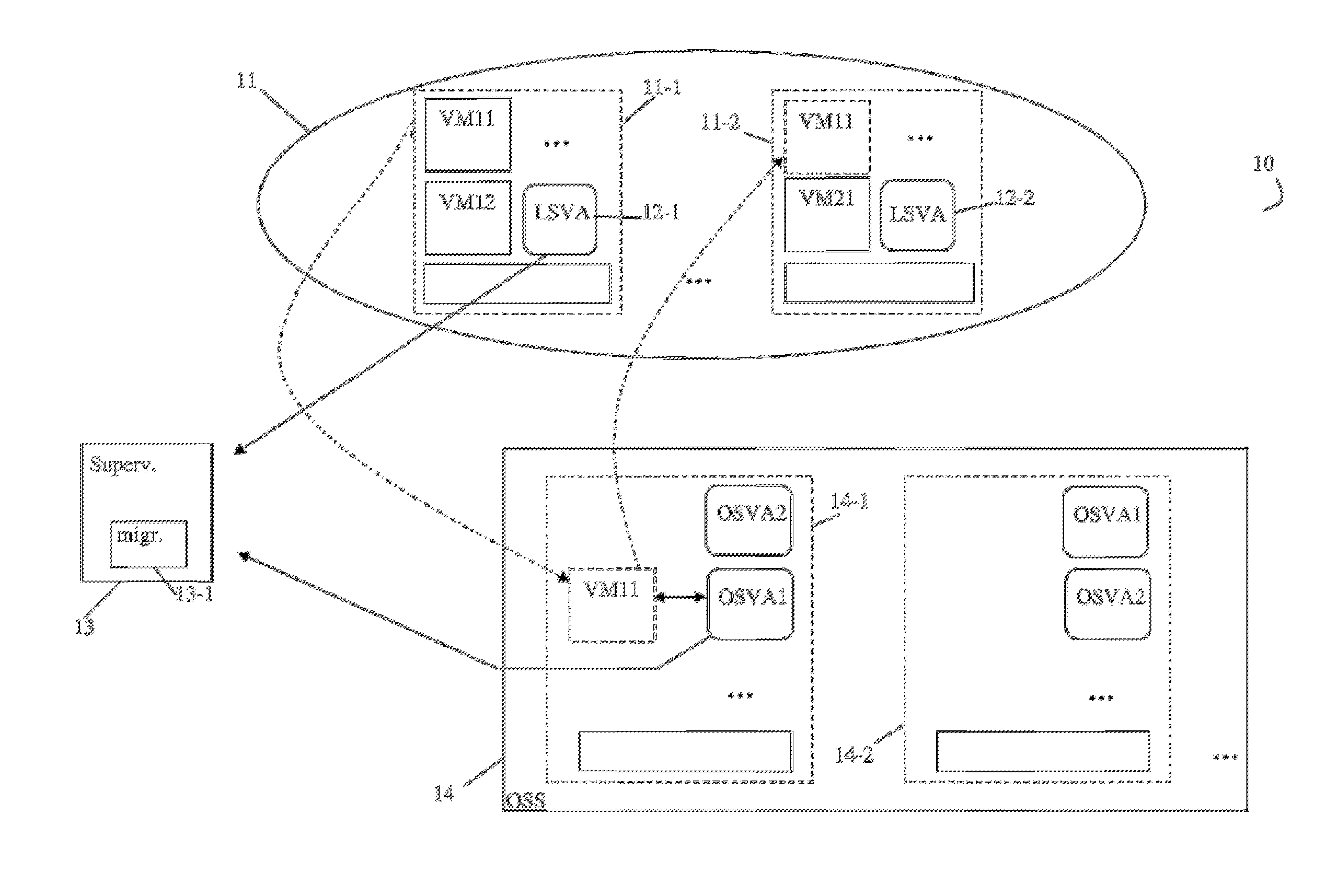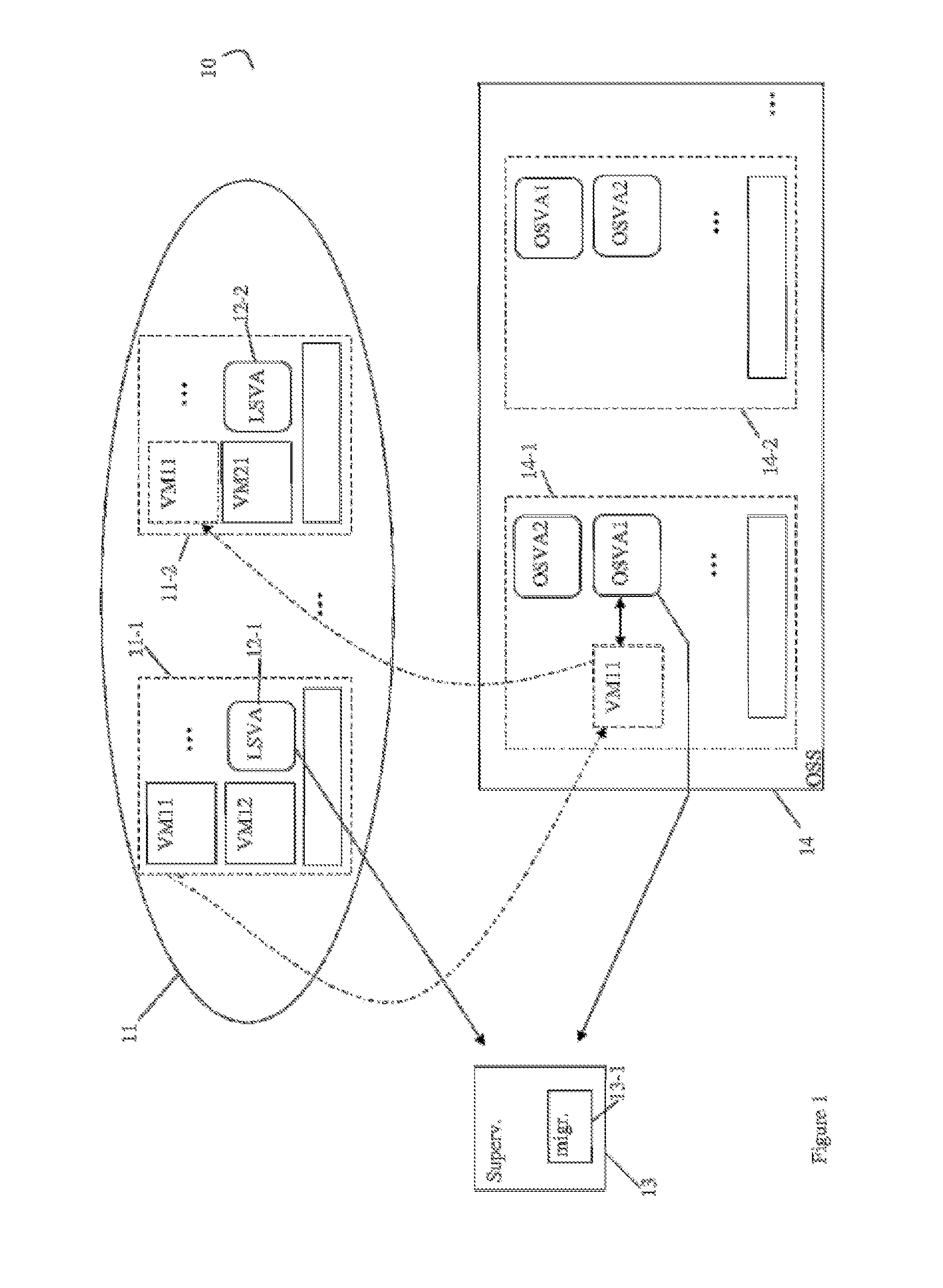Method for Detecting Attacks and for Protection
a technology applied in the field of attack detection and protection, can solve the problems of uncontrollable successive migration of virtual machines, inability to stop upward variation of resource consumption or malicious attack caused by virtual machines, and interruption of access to other virtual machines present, so as to reduce the risk of uncontrollable successive migration, the risk of increasing the resource requirements of a virtual machine under attack, and the effect of plenipotentiary
- Summary
- Abstract
- Description
- Claims
- Application Information
AI Technical Summary
Benefits of technology
Problems solved by technology
Method used
Image
Examples
Embodiment Construction
[0046]A cloud computing network infrastructure 10 comprises at least one set 11 of resources organized into a cluster. The cluster 11 groups a set of host servers 11-1, 11-2, . . . etc. Each host server 11-1, 11-2 of the cluster 11 is adapted for hosting one or more virtual machines VM11, VM12, VM21, . . . etc. More precisely, cluster 11 groups host servers capable of hosting virtual machines pertaining to a same functional area. Each host server 11-1, 11-2 of the cluster 11 also hosts a particular virtual machine, called a local security virtual machine (or LSVA Local Security Virtual Appliance) 12-1, 12-2. A local security virtual appliance or LSVA, for example the local security machine 12-1 is adapted for detecting attacks against virtual machines hosted by the host server 11-1, or abnormal behavior of these machines. With this aim, the local security machine 12-1 uses part of the resources of the host server 11-1, in the same way as the other active virtual machines hosted by t...
PUM
 Login to View More
Login to View More Abstract
Description
Claims
Application Information
 Login to View More
Login to View More - R&D
- Intellectual Property
- Life Sciences
- Materials
- Tech Scout
- Unparalleled Data Quality
- Higher Quality Content
- 60% Fewer Hallucinations
Browse by: Latest US Patents, China's latest patents, Technical Efficacy Thesaurus, Application Domain, Technology Topic, Popular Technical Reports.
© 2025 PatSnap. All rights reserved.Legal|Privacy policy|Modern Slavery Act Transparency Statement|Sitemap|About US| Contact US: help@patsnap.com



